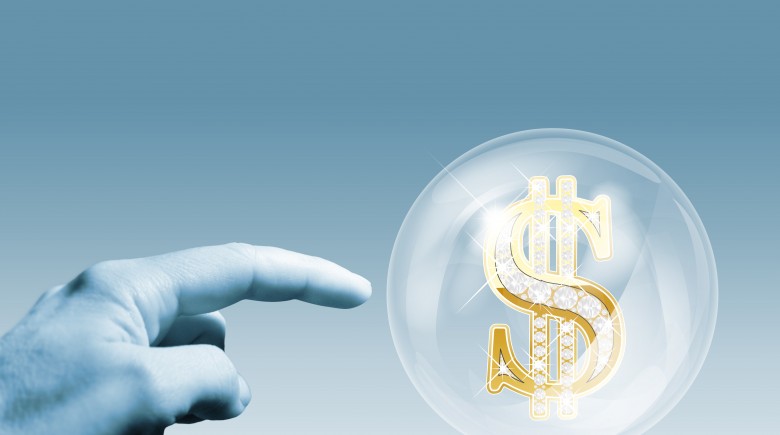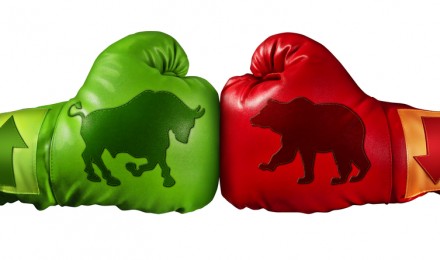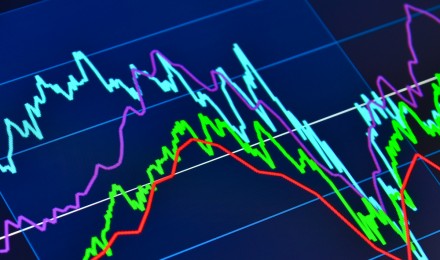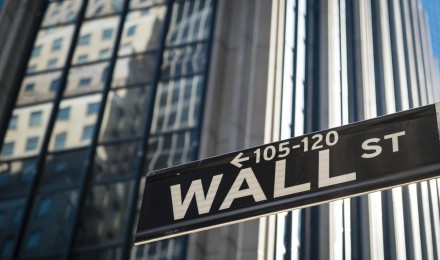Just a reminder not to get caught up in the markets. Retirement planning is a long term proposition and the good stock markets of late have helped many get closer to their goal. But, there is no need for a long memory to be continually on alert for the next downturn. The last bubble just happened a few years ago and while short-lived (in the stock prices, not the economy) there are signs of concern reappearing. Sure, corporations have lots of cash on hand and have, for all intents and purposes, healed from the panicky days of 2008/2009. Interest rates are low and potential employees are plentiful (to be understated about it). And with the markets hitting new highs regularly, there seems to be a pervasive feeling that there is nowhere to go but up. And that may very well be the case.
However, there continues to be unease, with consumer confidence periodically scraping lows and a pronounced lack of confidence in the future in the “heading in the right direction” polls. This could, arguably, be more firewood for the nowhere-to-go-but-up consensus, but it could also mean something else entirely. There is a disconnect between Wall Street and Main Street. While this is not uncommon as regular people tend to be biased toward current conditions and investors are focused on the future. However, this disconnect has been going on for five years now and if anything the discrepancy seems to be getting worse. This situation is odd, to say the least, and one group is going to be wrong, probably spectacularly so.
The bubble case runs nearly parallel to the bullish case, most closely in the interest rate scenario. The markets have gone higher because of the QE (quantitative easing) programs at the Fed, at least partially, and with rates at such rock bottom levels, there is a case to made that markets will continue higher. Don’t fight The Fed is a dear old saying on Wall Street for a reason. Of course, not often brought up by the bullish crowd is that, some day at least, rates must rise. Logically, once The Fed begins raising rates, then fighting The Fed would be buying stocks. So far, so normal though. But, what if this unprecedented Fed maneuvering is a bubble in itself? That is not an unusual question nowadays, even if it is often dismissed, but it has the advantage of having a bit of logic to it:
The current market “entirely artificial” environment driven by zero-interest-rates and central bank asset purchases, along with valuations and sentiment, has distorted the ‘markets’ in the same way as “in all other major tops in history.”
That sounds intuitively true doesn’t it? Of course, that doesn’t make it right as the markets often tend to move counter intuitively. But there is no denying that The Feds actions are unprecedented and the result of those actions is therefore unknown. Mark Spitznagel, the man quoted at the link, believes that we are in for a sharp and sudden drop of 40% and soon. No one knows the future, but it always a good idea to be prepared. Make sure that your portfolio can withstand a sharp drop and that is in the correct balance. Many investors have drifted out of their original planning as stocks have risen (and bonds have declined). However you may feel about the future of the stock market, it is no secret that when things begin to go south there is little time to react. 1987, 2000, and 2008 are all example of the bubble bursting faster than it formed. If this is a Fed induced bubble, the downside could be fast and ferocious.
Just a reminder not to get caught up in the markets. Retirement planning is a long term proposition and the good stock markets of late have helped many get closer to their goal. But, there is no need for a long memory to be continually on alert for the next downturn. The last bubble just happened a few years ago and while short-lived (in the stock prices, not the economy) there are signs of concern reappearing. Sure, corporations have lots of cash on hand and have, for all intents and purposes, healed from the panicky days of 2008/2009. Interest rates are low and potential employees are plentiful (to be understated about it). And with the markets hitting new highs regularly, there seems to be a pervasive feeling that there is nowhere to go but up. And that may very well be the case.
However, there continues to be unease, with consumer confidence periodically scraping lows and a pronounced lack of confidence in the future in the “heading in the right direction” polls. This could, arguably, be more firewood for the nowhere-to-go-but-up consensus, but it could also mean something else entirely. There is a disconnect between Wall Street and Main Street. While this is not uncommon as regular people tend to be biased toward current conditions and investors are focused on the future. However, this disconnect has been going on for five years now and if anything the discrepancy seems to be getting worse. This situation is odd, to say the least, and one group is going to be wrong, probably spectacularly so.
The bubble case runs nearly parallel to the bullish case, most closely in the interest rate scenario. The markets have gone higher because of the QE (quantitative easing) programs at the Fed, at least partially, and with rates at such rock bottom levels, there is a case to made that markets will continue higher. Don’t fight The Fed is a dear old saying on Wall Street for a reason. Of course, not often brought up by the bullish crowd is that, some day at least, rates must rise. Logically, once The Fed begins raising rates, then fighting The Fed would be buying stocks. So far, so normal though. But, what if this unprecedented Fed maneuvering is a bubble in itself? That is not an unusual question nowadays, even if it is often dismissed, but it has the advantage of having a bit of logic to it:
The current market “entirely artificial” environment driven by zero-interest-rates and central bank asset purchases, along with valuations and sentiment, has distorted the ‘markets’ in the same way as “in all other major tops in history.”
That sounds intuitively true doesn’t it? Of course, that doesn’t make it right as the markets often tend to move counter intuitively. But there is no denying that The Feds actions are unprecedented and the result of those actions is therefore unknown. Mark Spitznagel, the man quoted at the link, believes that we are in for a sharp and sudden drop of 40% and soon. No one knows the future, but it always a good idea to be prepared. Make sure that your portfolio can withstand a sharp drop and that is in the correct balance. Many investors have drifted out of their original planning as stocks have risen (and bonds have declined). However you may feel about the future of the stock market, it is no secret that when things begin to go south there is little time to react. 1987, 2000, and 2008 are all example of the bubble bursting faster than it formed. If this is a Fed induced bubble, the downside could be fast and ferocious.







